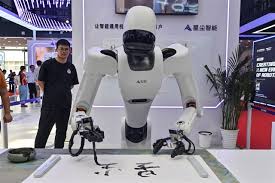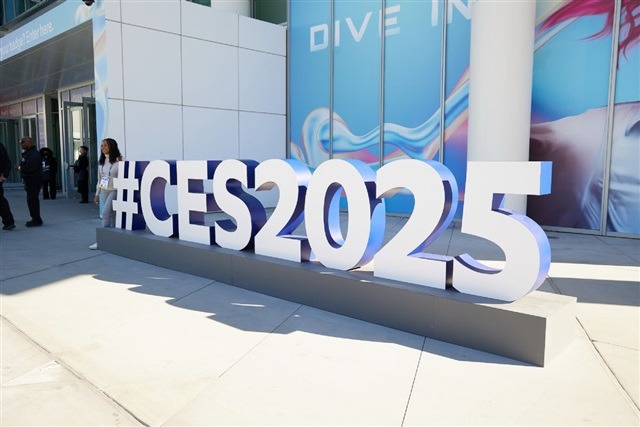The integration of artificial intelligence (AI) and robotics is reshaping the industrial personal computer (IPC) sector, signaling the onset of what many experts are calling a golden decade. As industries globally transition toward automation, data-driven decision-making, and advanced machine learning applications, the role of IPCs as the backbone of industrial automation has never been more critical. This shift not only underscores the growing importance of innovative technologies but also highlights the strategic moves companies must make to remain competitive in a rapidly evolving landscape.

The IPC industry is undergoing a profound transformation, driven by advancements in AI and robotics that are redefining how industries operate. IPCs, which serve as essential tools for managing industrial automation systems, have been pivotal in enabling the seamless integration of hardware and software in sectors such as manufacturing, logistics, and healthcare. With AI-enhanced robotics becoming central to operational efficiency, IPCs are poised to take on more sophisticated roles, including predictive maintenance, real-time process monitoring, and autonomous decision-making.
At the core of this transformation is the increasing adoption of AI technologies that empower IPCs to process and analyze vast amounts of data at unprecedented speeds. Traditional IPCs relied on basic processing capabilities to manage industrial workflows, but the infusion of AI has expanded their potential exponentially. Advanced algorithms allow IPCs to not only monitor operations but also predict outcomes, identify inefficiencies, and propose solutions. This capability is critical in sectors where downtime or errors can lead to substantial financial losses or safety risks.
Robotics further amplifies the potential of IPCs by enabling physical automation that complements their computational power. Industrial robots equipped with AI-driven IPCs can perform complex tasks with precision and adaptability, ranging from assembly line operations to intricate surgical procedures. The synergy between robotics and IPCs is especially evident in smart factories, where machines communicate with one another to optimize production processes without human intervention. This level of automation, often referred to as Industry 4.0, marks a significant leap forward in industrial innovation.
The demand for smarter, AI-integrated IPCs is also driving technological advancements in hardware. Modern IPCs are equipped with powerful processors, enhanced memory capacities, and advanced connectivity options, ensuring seamless integration with IoT (Internet of Things) devices and cloud platforms. These upgrades enable IPCs to support the high computational demands of AI applications while maintaining reliability in harsh industrial environments. Furthermore, advancements in edge computing allow IPCs to process data locally, reducing latency and improving real-time decision-making capabilities.
The applications of AI and robotics in the IPC industry extend across multiple sectors, each benefiting from tailored solutions that address specific operational challenges. In the manufacturing sector, for instance, IPCs equipped with AI algorithms enable predictive maintenance, reducing machine downtime by identifying potential failures before they occur. Similarly, in logistics, autonomous robots guided by AI-powered IPCs streamline warehouse operations by optimizing inventory management and enhancing order fulfillment processes. In healthcare, robotic-assisted surgeries powered by AI-driven IPCs offer unparalleled precision, reducing risks and improving patient outcomes.
One of the key factors contributing to this golden decade is the increasing accessibility of AI technologies. While early AI systems required significant investments and expertise, recent advancements have democratized access, enabling smaller firms to adopt and implement AI-driven IPC solutions. Open-source AI frameworks, cloud-based services, and user-friendly development tools have leveled the playing field, allowing companies of all sizes to leverage the benefits of AI and robotics. This democratization is fostering innovation across the IPC industry, as startups and established players alike explore new applications and business models.
However, this rapid transformation also presents challenges that must be addressed to ensure sustainable growth. One of the primary concerns is the need for standardized protocols and interoperability among IPCs, robots, and other industrial systems. As companies adopt diverse technologies from multiple vendors, ensuring seamless communication and integration becomes crucial. Standardization efforts are underway, led by industry consortia and regulatory bodies, but achieving global consensus remains a complex task.
Another significant challenge is the shortage of skilled professionals who can design, implement, and maintain AI-driven IPC systems. The rapid pace of technological advancement has outpaced workforce development, creating a skills gap that could hinder the adoption of advanced IPC solutions. To address this issue, companies and educational institutions are collaborating to develop specialized training programs and certifications that equip professionals with the necessary expertise.
Security is also a critical concern in the era of AI and robotics. As IPCs become more interconnected and reliant on data, they become potential targets for cyberattacks. Ensuring the security of IPC systems requires robust measures, including encryption, secure communication protocols, and real-time threat detection. Companies must prioritize cybersecurity to protect their operations and maintain the trust of stakeholders.
The economic impact of this golden decade for the IPC industry is significant. According to industry reports, the global IPC market is expected to grow substantially in the coming years, driven by increasing demand for automation and smart technologies. Investments in research and development are fueling innovation, while strategic partnerships between technology providers and industrial players are accelerating the deployment of AI-driven IPC solutions.
The table below provides an overview of the key advancements in IPC technology and their applications across various sectors:
| Advancement | Description | Application Examples |
|---|---|---|
| AI Integration | Advanced algorithms for data analysis | Predictive maintenance, quality control |
| Edge Computing | Localized data processing capabilities | Real-time monitoring, latency reduction |
| IoT Connectivity | Integration with connected devices | Smart factories, logistics automation |
| Robotics Synergy | Enhanced automation with precision | Surgical robotics, assembly lines |
The growing influence of AI and robotics in the IPC industry reflects a broader trend toward digital transformation across the industrial landscape. Companies that embrace these technologies are positioning themselves to thrive in an increasingly competitive market, while those that hesitate risk falling behind. For businesses, the key to success lies in strategic investments, collaborative innovation, and a commitment to continuous learning.
In conclusion, the IPC industry stands at the forefront of a technological revolution driven by AI and robotics. This golden decade represents a unique opportunity for companies to harness the potential of these advancements to improve efficiency, reduce costs, and create new value. As the industry continues to evolve, staying informed and proactive will be essential for navigating the challenges and seizing the opportunities that lie ahead.










Add Comment